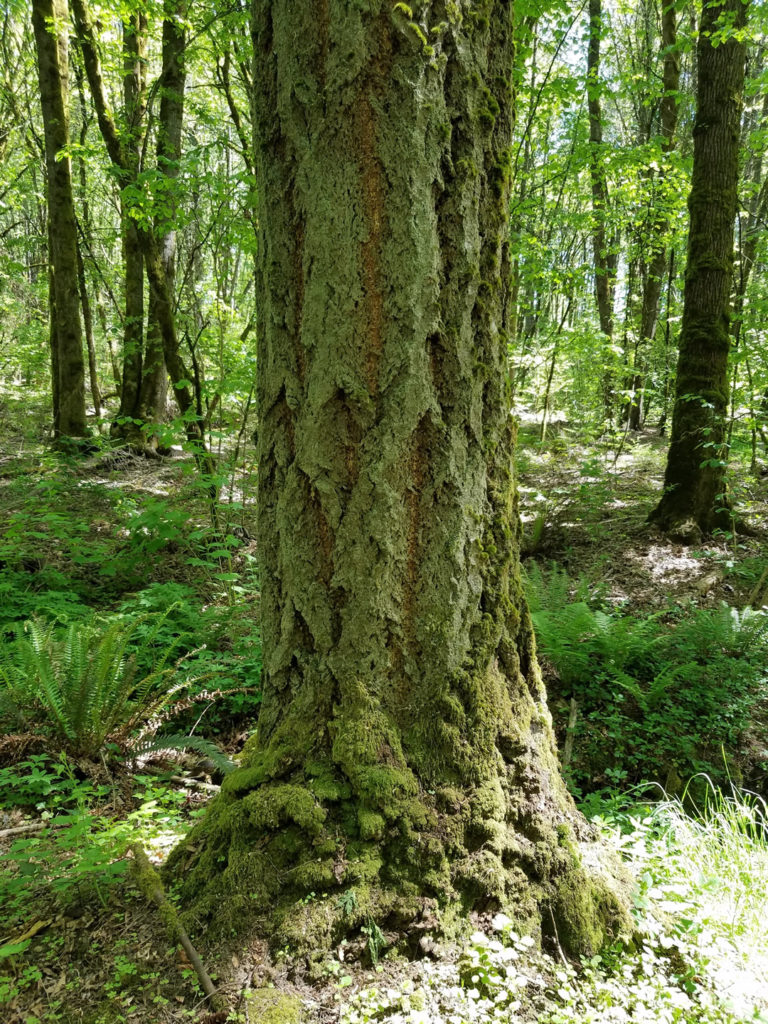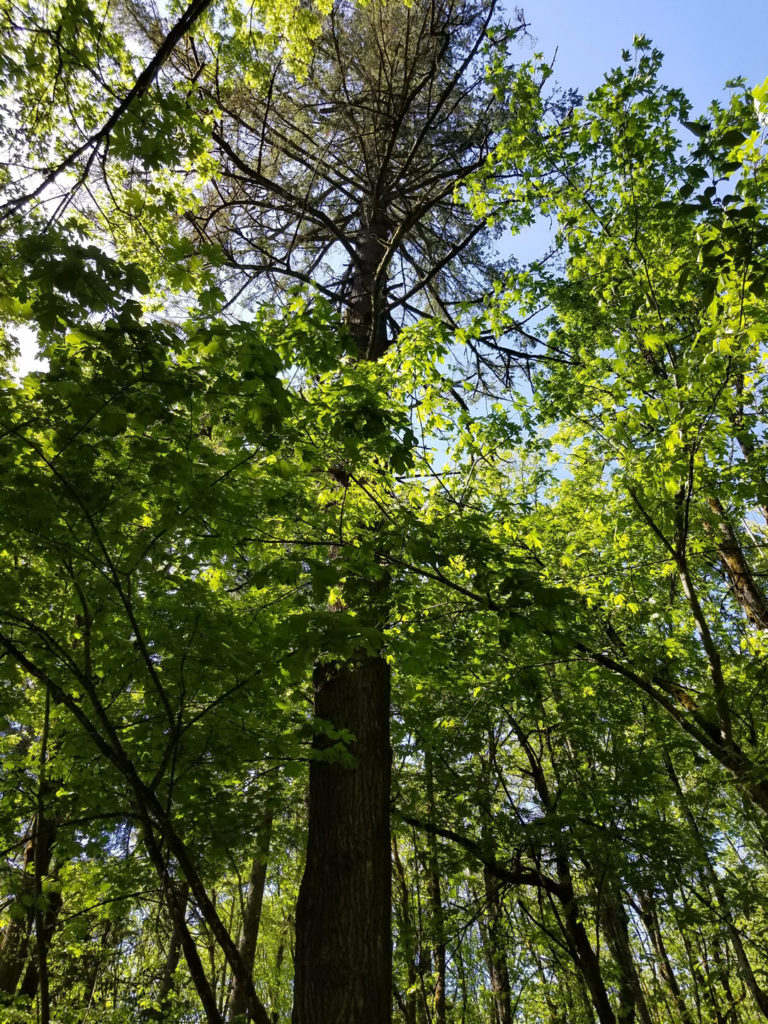 Douglas Fir, Pseudotsuga menziesii
Douglas Fir, Pseudotsuga menziesii
Pinaceae – Pine, fir family.
“Pseudotsuga” is derived from “pseudo” (false) and “tsuga” (the Japanese name for hemlock). “Menziesii” is derived from the name of the naval surgeon and naturalist with the expedition of captain George Vancouver, Archibald Menzies (1754-1842). The common name honors the famous Scottish botanist and explorer David Douglas (1799-1834). Despite the common name, the tree is not a true fir of the genus Abies.
Old growth Douglas fir giants may live for over a thousand years and may top 300 feet. The lofty boughs of Douglas-fir are frequently too high for identification, but the thick, fissured, and corky bark is immediately recognizable. If there is still any doubt, the triple pointed bracts of the fallen cones look like so many mice diving for cover! Douglas-fir bark and wood were important sources of firewood for the Northwestern Native peoples. Pitch-saturated boughs were used for torches. Harpoon shafts, spears, net handles, and other implements were crafted from the wood. Some tribes used pitch as medicine by applying it to sores. (Turpentine, derived from the pitch of various conifers, has been historically used as a disinfectant and medicinal in Western medicine). The pitch, needles, or bark of young roots were sometimes boiled and the infusion drunk as a cold tonic. Bud tips, perhaps like lozenges, were chewed for sore throat. The small winged seeds are food for Douglas squirrel, chipmunks, mice, and many birds. Black bears are well-known to strip bark off young trees in order to dine on the soft and nutritious cambium layer (5-27).

Information courtesy of “The View From Springbrook Park; an Illustrated Natural History” by Ed Chinn.
Photos by Laura Tanz
Sponsored by Friends of Springbrook Park; Lake Oswego, OR